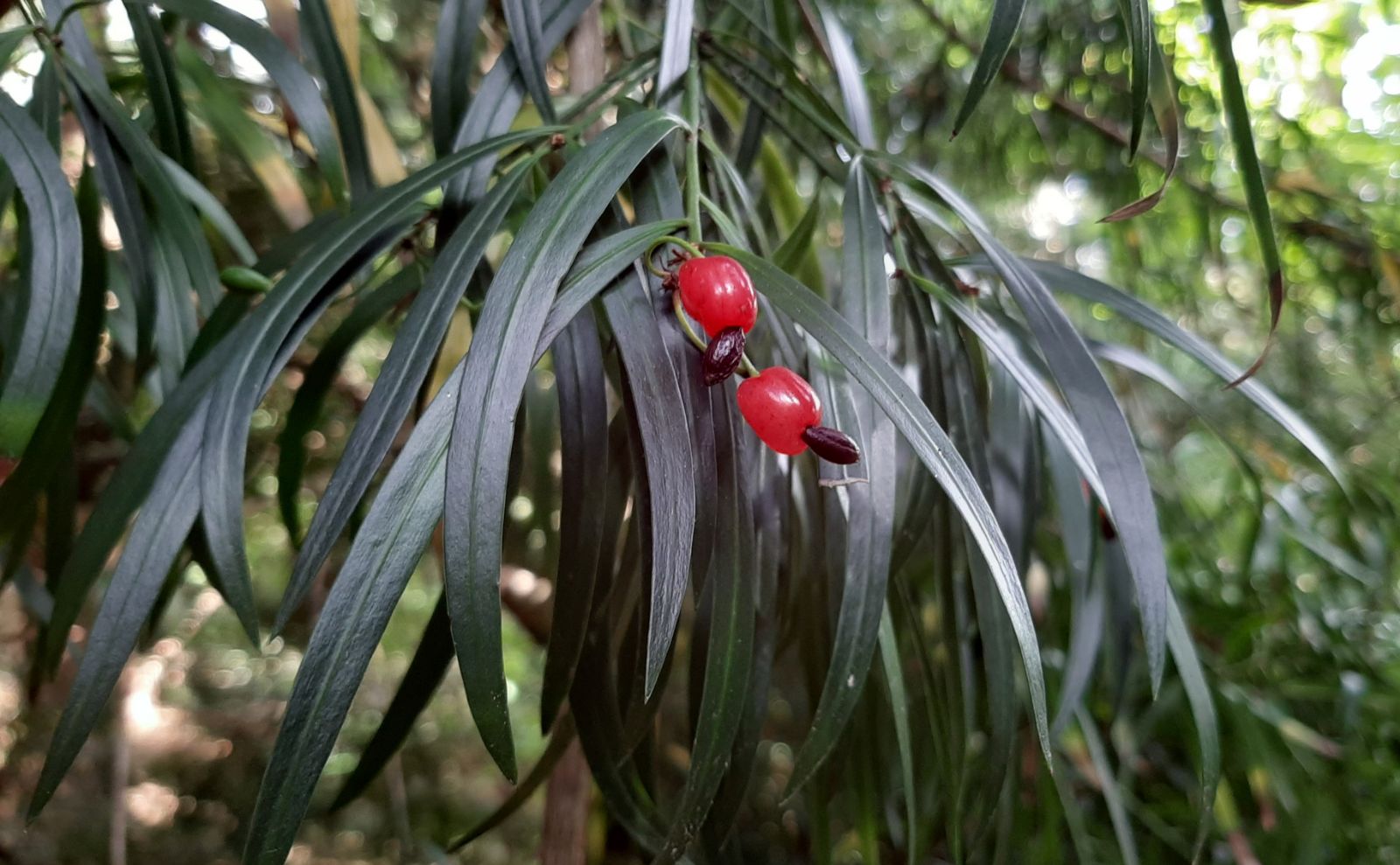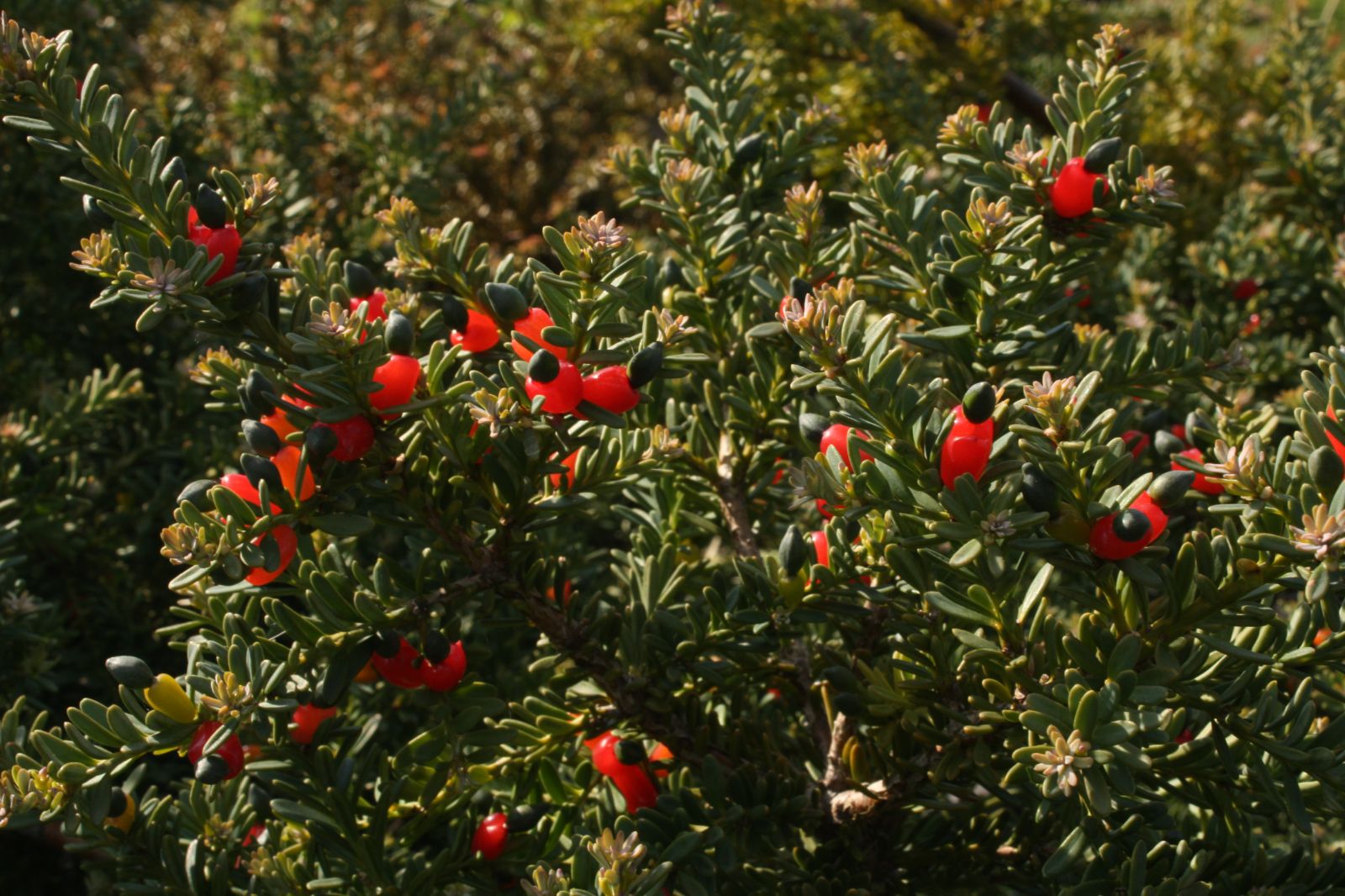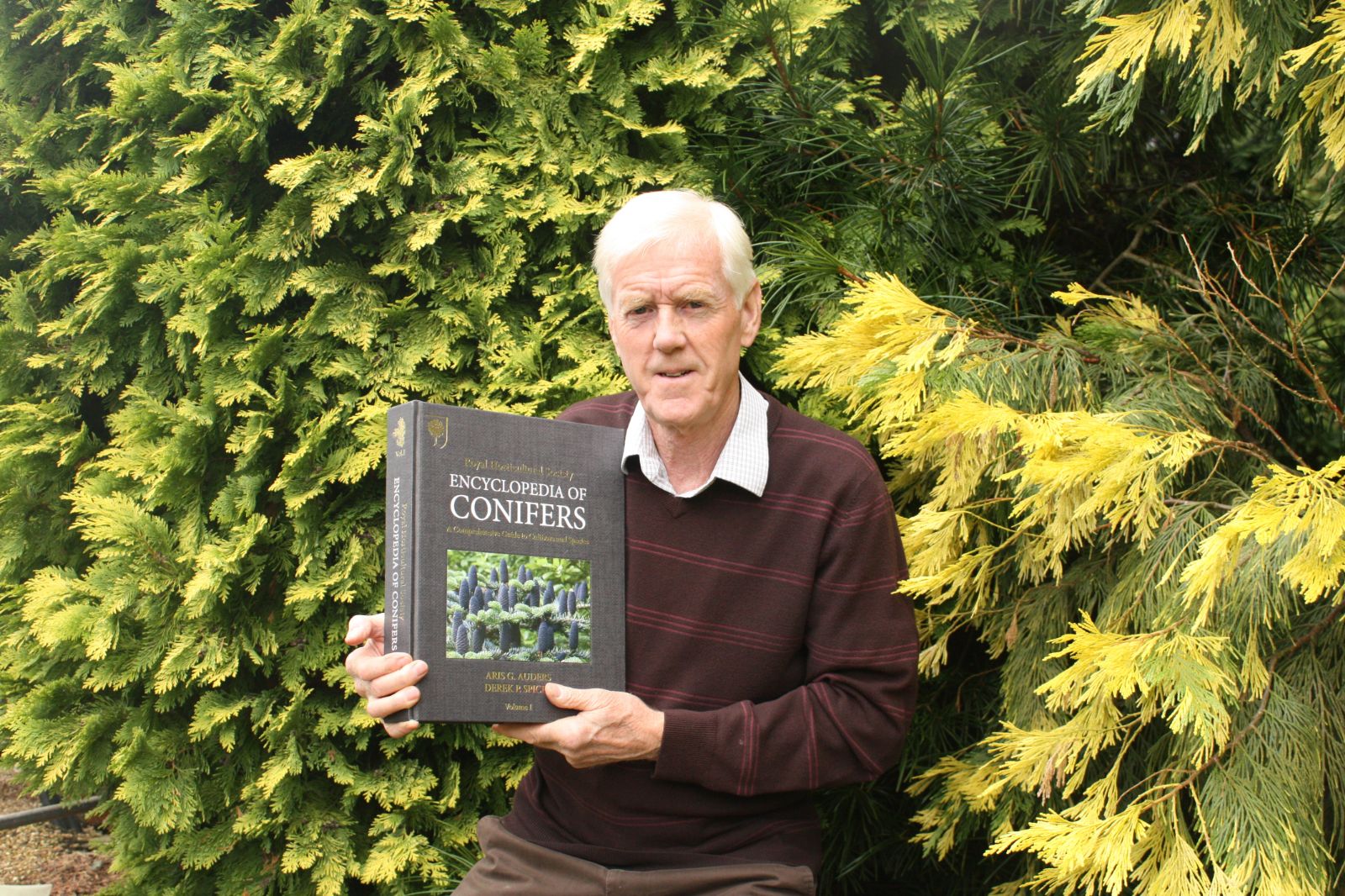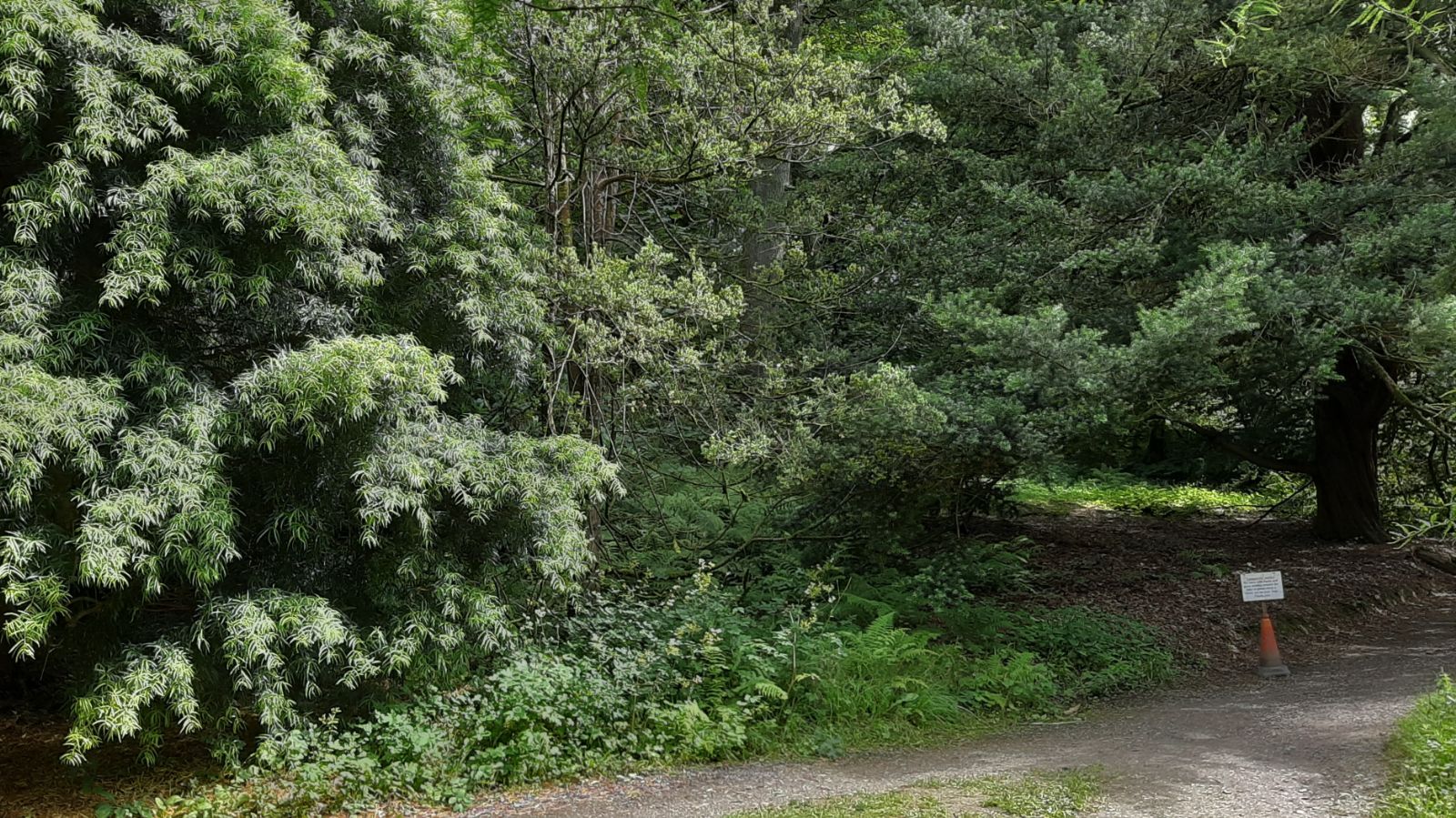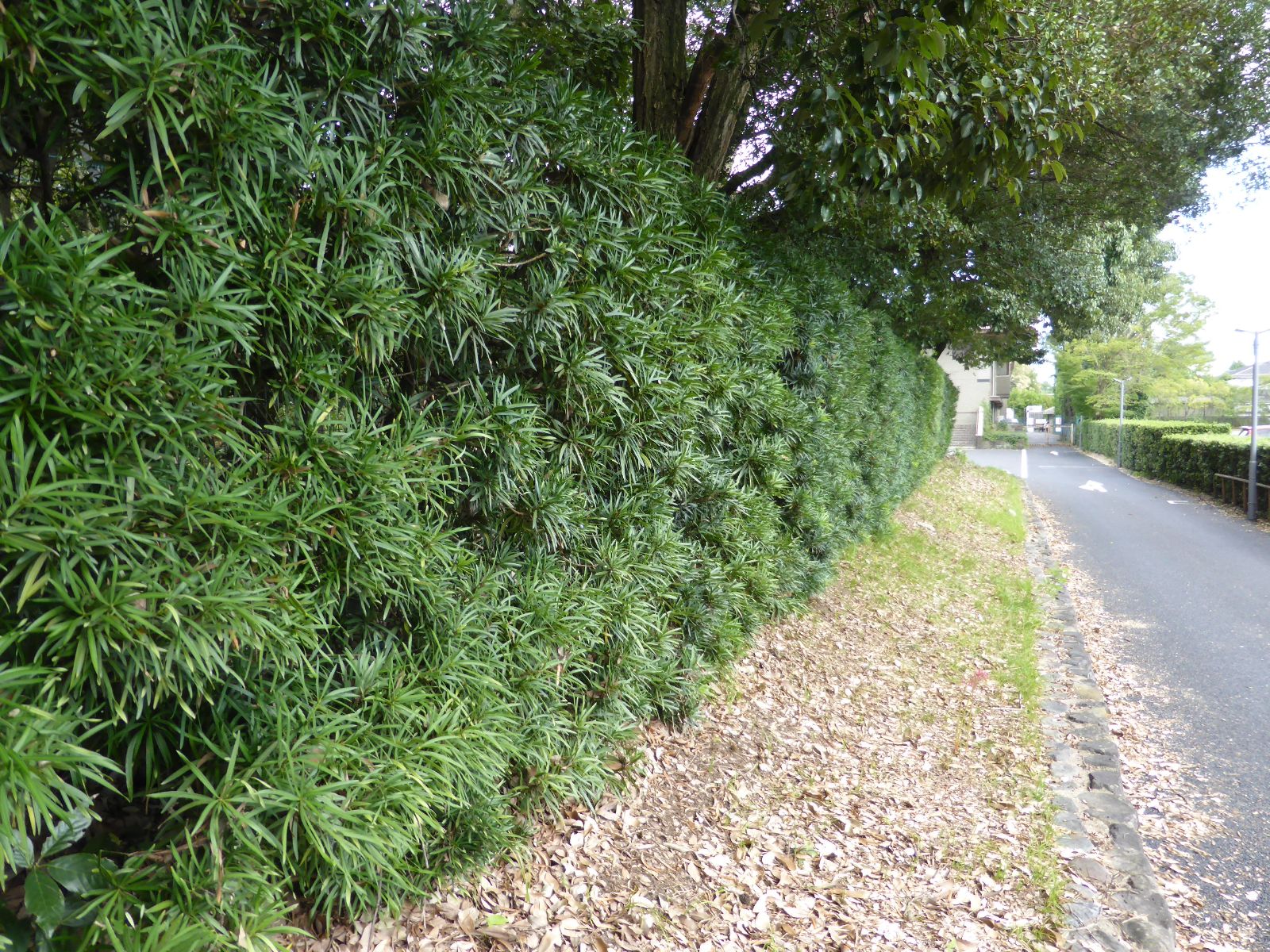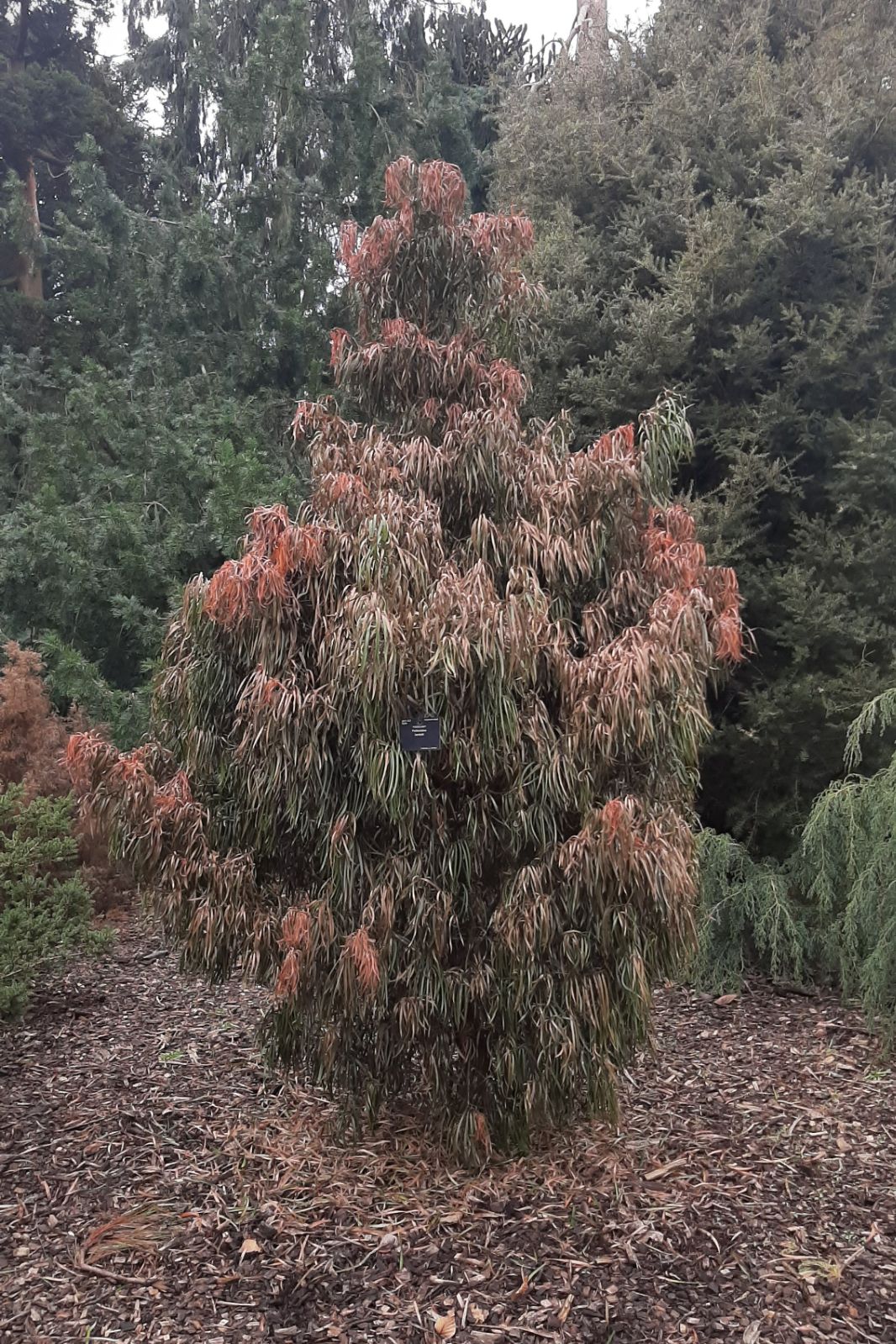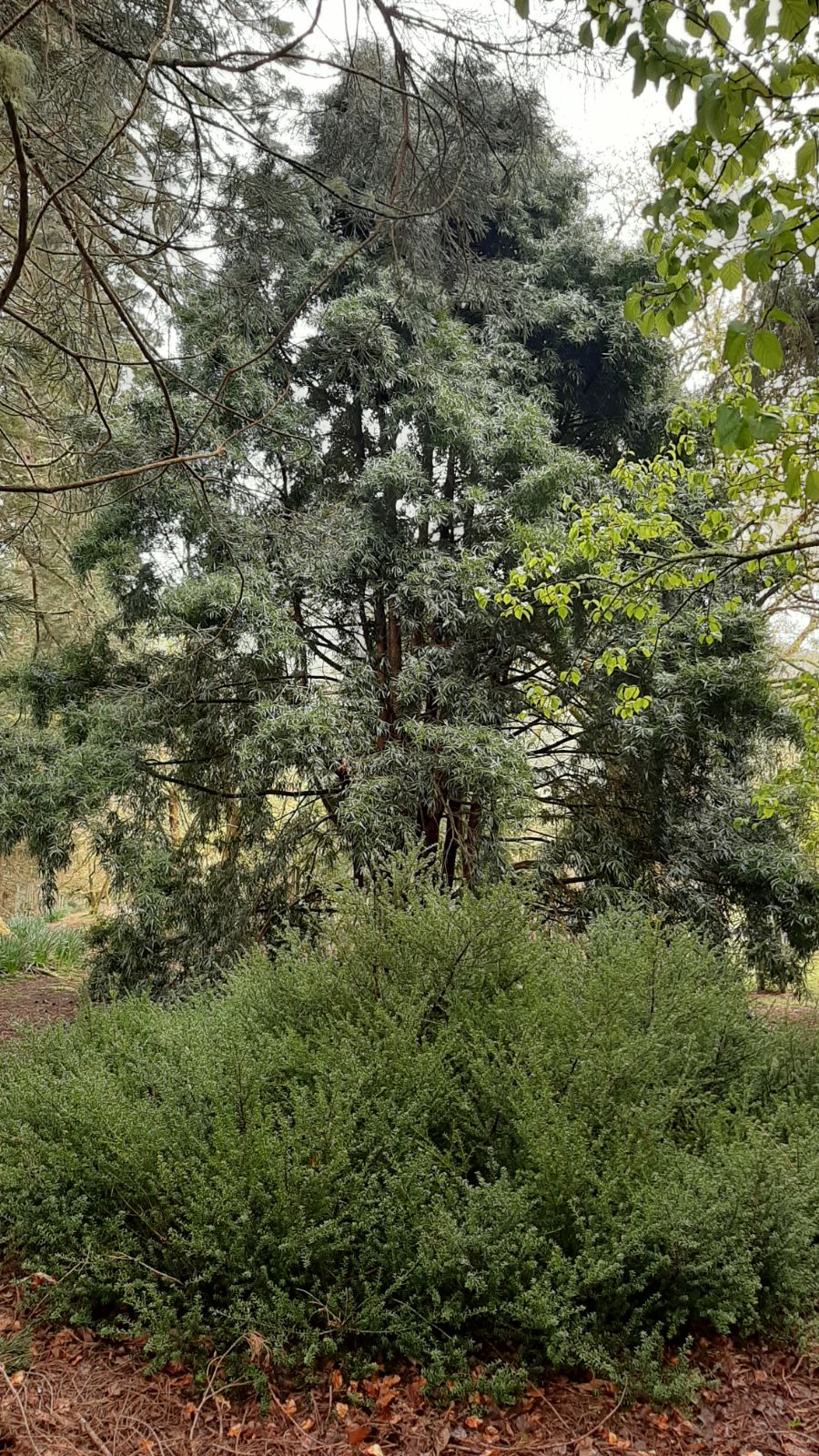Podocarpus
Sponsor
Kindly sponsored by
The British Conifer Society in memory of Derek Spicer VMM, founder member.
Credits
Tom Christian (2023)
Recommended citation
Christian, T. (2023), 'Podocarpus' from the website Trees and Shrubs Online (treesandshrubsonline.
Family
- Podocarpaceae
Common Names
- Podocarps
- Yellow-woods
Synonyms
- Margbensonia A.V. Bobrov & Melikyan
Species in genus
- Podocarpus acutifolius
- Podocarpus acutifolius × lawrencei
- Podocarpus acutifolius × nivalis
- Podocarpus acutifolius × totara
- Podocarpus brassii
- Podocarpus costalis
- Podocarpus drouynianus
- Podocarpus elatus
- Podocarpus elongatus
- Podocarpus guatemalensis
- Podocarpus henkelii
- Podocarpus laetus
- Podocarpus laetus × nivalis
- Podocarpus lambertii
- Podocarpus latifolius
- Podocarpus lawrencei
- Podocarpus lawrencei × nivalis
- Podocarpus macrophyllus
- Podocarpus matudae
- Podocarpus milanjianus
- Podocarpus nakaii
- Podocarpus neriifolius
- Podocarpus nivalis
- Podocarpus nubigenus
- Podocarpus oleifolius
- Podocarpus parlatorei
- Podocarpus pilgeri
- Podocarpus pseudobracteatus
- Podocarpus salignus
- Podocarpus spinulosus
- Podocarpus totara
Dioecious (rarely monoecious) coniferous, evergreen trees, to c. 40 m × 3–4 m dbh with dense irregular crowns, or shrubs, carpet-forming to several metres tall. Bark thick or thin, usually fibrous, devloping ridges, often exfoliating in strips or plates. Branchlets greenish for several years, often obscured by densely set leaves. Terminal buds distinctive, often conspicuous, with imbricate and/or recurved scales. Leaves spirally arranged to subopposite, often appearing crowded or two-ranked, 0.4–50 cm (to c. 15 cm on adult plants in those species treated here); there are some differences between adult and juvenile foliage, with juvenile leaves tending to be larger than adult leaves. Leaves flattened, linear-lanceolate to elliptic, leathery (often thinly so), with a midrib. Pollen cones axillary, sessile or stalked, to c. 5 cm, solitary or in groups of 2–6, upright at first, cylindrical. Seed cones axillary (rarely terminal), short- or long-stalked, solitary or in pairs; composed of a single fertile scale bearing one or two (to three) ovules, subtended by several sterile bracts which are usually fused together to form a receptacle. The receptacle becomes fleshy or leathery, and brightly coloured in some species, while in others it is obsolete; epimatium usually pruinose at first, completely enclosing the seed; it may also become fleshy and brightly coloured. Seeds up to 2 cm (mostly smaller in those species treated here). Cotyledons 2. (Farjon 2017; Debreczy & Rácz 2011; Grimshaw & Bayton 2009).
Overview
Podocarpus is a coniferous genus primarily distributed in the tropical, sub-tropical, and adjacent warm-temperate regions of the southern hemisphere, in lowland to montane forests and sub-alpine vegetation, and occasionally in savannah (Farjon 2017). A few species have their entire or main distribution north of the equator, in montane sub-tropical to warm-temperate regions of southern Asia, Africa, and Mesoamerica. Seven species are distributed in relatively cool-temperate regions of the southern hemisphere, in Chile and Argentina (P. nubigenus, P. salignus), in Australia (P. lawrencei), and in New Zealand (P. acutifolius, P. laetus, P. nivalis, and P. totara) (Debreczy & Rácz 2011). This last group (and their hybrids) is the most important group of species in temperate gardens.
Podocarpus is widely acknowledged as the second largest genus of conifers after Pinus, but accounts vary as to how many species each includes: Plants of the World Online (2023) give 115 species in Podocarpus cf. 118 in Pinus; Farjon (2017) gives 98 cf. 113; Debreczy & Rácz (2011) give 107 cf. 128. These discrepancies hint at just how unsettled species delimitation is in both genera, as several authorities freely acknowledge: Farjon observes that ‘the taxonomy [of Podocarpus] is perhaps the least well settled among the major coniferous genera’ (Farjon 2017). Fortunately, most of this taxonomic uncertainty concerns taxa distributed in the tropics and subtropics, well beyond the scope of Trees and Shrubs Online, but the taxonomy of several of the species treated here is certainly not settled, particularly those taxa in the orbit of P. macrophyllus.
Putting Podocarpus in context: a brief history of Podocarpaceae
Podocarpus is the type genus in Podocarpaceae, a family of conifers whose distribution follows that of its type genus almost exactly (other Podocarpaceae genera have rather restricted distributions by comparison). The family is sister to Araucariaceae, and together these two families form a sister clade to another containing Cupressaceae, Sciadopityaceae and Taxaceae (Yang et al. 2022). Podocarpaceae is distinguished by its much reduced and usually fleshy seed cones (cf. woody seed cones in Araucariaceae); the fleshy element has traditionally been used to infer a close relationship between Podocarpaceae and Taxaceae by virtue of that family’s fleshy arils, but current opinion is that they are not so closely related as once thought. In both families the purpose of the fleshy cones is to attract animals, usually birds or rodents, which disperse seeds often over large distances, but like all conifers Podocarpaceae are wind pollinated (Farjon 2017).
Podocarpaceae remains the least well researched of the three major conifer families (Cupressaceae, Pinaceae, Podocarpaceae), and Podocarpus is itself one of the less well known of the major coniferous genera. In both cases this is due partly to a scattered distribution, often in difficult-to-access habitats and locations, and partly to the startlingly small number of morphological characters that are of use to taxonomists; additionally, several taxa are founded on only a few herbarium sheets and are very poorly known as wild plants (Farjon 2017; Mill 2014). Even the delimitation of genera in Podocarpaceae has not always been straightforward. Early attempts by 18th and 19th century Europeans at classifying these obscure, antipodean oddities usually took the form of implausibly broad genus concepts, resulting in a sort of sensu latissimo use of the oldest generic names in the family, namely Dacrydium Sol. ex G. Forst. (1786) and Podocarpus L’Hér ex Pers. (1807), both of which became taxonomic holding pens for taxa that then had nowhere else to go (Mill 2014).
As generic concepts developed through the 20th century these earlier constructs tended to fail at the first hint of proper scrutiny. A protracted reshuffle spanning the period from the late 1960s to the mid 1990s ushered in significant changes. The family’s traditional broad-concept genera were both split: the known species of Podocarpus were distributed between Podocarpus in a reduced sense, Dacrycarpus de Laub. (described in 1969), Afrocarpus Page (described in 1989), and Prumnopitys Philippi (an old genus which Page resurrected in 1989) and Nageia Gaertn. (described in 1788, Nageia spent much of the next two centuries moving in and out of Podocarpus). Dacrydium went through a similar process with Lepidothamnus Philippi resurrected and the following new genera described through the late 20th century: Falcatifolium de Laub. (1969; a tropical genus not discussed in this work), Halocarpus Quinn (1982), Lagarostrobos Quinn (1982), and finally Manoao Molloy (1995) (Farjon 2017; Mill 2014).
This summary belies the complex taxonomic machinations that finally resulted in the relatively stable suite of genera that are now accepted in Podocarpaceae. Robert Mill, recently retired taxonomist at the Royal Botanic Garden Edinburgh, gives a comprehensive taxonomic history of Podocarpus (and by extension many of its close allies) in a paper available via the Edinburgh Journal of Botany website, cited here as ‘Mill 2014’. The most significant subsequent development is the publication of a new genus, Pectinopitys C.N. Page, described in 2019 to accommodate six of the nine species formerly (and somewhat uncomfortably) placed in Prumnopitys (Page 2019). This was a final, important contribution from the late Chris Page (1942–2022) who had already contributed much to conifer taxonomy and conservation during his earlier career, also at Edinburgh, where he is fondly remembered.
Podocarpus in horticulture
It is important to note that late 20th century horticultural literature largely continued to follow the older, broad-concept taxonomies when discussing Podocarpaceae – Bean’s eighth and last edition (Bean 1976) continued to follow them for example, so too notable dendrologists like Mitchell (Mitchell 1972), Krüssmann (Krüssmann 1985) and Clarke (Clarke 1988), and the European Garden Flora (Walters et al. 1986) – no doubt to avoid confusion, and partly because changes were ongoing at the time these works were published. One of the consequences of the continued use of old names in such important texts, however, is the stickiness of synonyms in this family: one still encounters names such as Podocarpus andinus (=Prumnopitys andina) and P. nagi (=Nageia nagi) far too frequently, long after their use should have abated. When searching for a podocarp in literature – and even some databases – it is still worth searching for synonyms as well as the accepted, modern names.
Many Podocarpus species are highly ornamental plants and have been introduced to horticulture in various parts of the world; some are important timber trees, mostly within their native ranges, but unsustainable harvesting has resulted in numerous species becoming of conservation concern (Farjon 2017). In horticulture, many species are utilised within or near to their areas of natural distribution and a few are more widely grown still; some sub-tropical and warm-temperate species have become significant landscape plants, for example P. macrophyllus, which is valued as an ornamental in appropriate climatic zones on all the tree-growing continents. The seven species distributed in the cool-temperate southern hemisphere have played a continuous albeit minor role in northern gardens since their introductions, where they are valued for their inferred rarity as much as their aesthetic (Grimshaw & Bayton 2009; Krüssmann 1985).
In recent years the hardy shrubby species in particular have enjoyed a renaissance thanks to the breeding and selection of a considerable range of colour forms that have helped to earn Podocarpus, at last, a place in domestic northern gardens (Grimshaw & Bayton 2009). Several horticulturists have helped to revitalise interest in the genus, particularly the late Graham Hutchins of County Park Nursery (Essex, UK), and the late Derek Spicer of Kilworth Conifers (Leicestershire, UK) in whose memory this account of the genus is dedicated.
Nevertheless, Podocarpus is a difficult genus to characterise in a horticultural reference work focused on truly temperate parts of world. It is a far more important genus in warmer regions such as Australia, New Zealand and parts of the southern USA than it is further north in our proper study area. Here, as with many other southern hemisphere plants, its two principle enemies are harsh winters and cool summers; its two principle allies being year-round precipitation and summer warmth. The problem is that across much of the northern hemisphere these qualities are mutually exclusive: hot summers tend to mean dry summers and/or cold winters, and year-round rainfall usually means cool summers.
Consequently, the only species that are at all widespread in northern gardens are the ‘southern seven’, but even these are restricted to the few maritime areas that combine mild winters and abundant year-round precipitation. The greatest concentration of large examples in cultivation may be found across the island of Ireland and in western Britain, particularly in southwest England, but a few well-sited individuals have excelled in favourable gardens away from these areas (Tree Register 2022). Species like P. salignus and P. totara are grown in gardens on the Atlantic edge of Europe, particularly in Normandy, Brittany, and in the grounds of the castles and palaces of Sintra in Portugal (pers. obs.). Further south, in locations like Sintra, along the French and Italian Rivieras, around the Italian Lakes, and from the southern edge of our North American study area southward, are the better examples of warm-temperate species such as P. macrophyllus, for which even the warmest English counties are only just becoming warm enough, but with the exception of P. macrophyllus itself very few species are commonly cultivated outside their native ranges. With adequate access to water many will thrive in gardens in California (it must be stressed that while heat is rarely an issue, podocarps are drought sensitive) and north up the Pacific seaboard in favourable spots to the Vancouver area in zones 8–9; several of the hardier species will be hardy to zone 7 if carefully sited (Dirr 2009).
All the same, any student of podocarps wishing to study them in an outdoor setting in the temperate northern hemisphere would find Cornwall hard to beat, and in particular Tregrehan, where Tom Hudson has built up probably the most comprehensive collection grown outdoors in Europe. The Tregrehan collection was of enormous value in researching and preparing this new account for IDS Trees and Shrubs Online. Furthermore, it serves to illustrate how far this genus has come in gardens in the relatively recent past.
Few of the early introductions of podocarps to European horticulture generated significant excitement. Large tree-forming species like New Zealand’s Podocarpus totara were burdened with a weight of expectation that they could not live up to in northern gardens and they quickly became collectors items – their rather exacting environmental requirements were another barrier to broader use and popularity. Interest in the genus seems to have dipped to a particularly low ebb in the early 20th century when China’s extraordinary floristic wealth began to flow into western gardens, monopolising horticulture’s attention. Bean’s eighth edition (1976) treated only six species that are still included in Podocarpus today (P. lawrencei [as P. alpinus]; P. macrophyllus; P. nivalis; P. nubigenus; P. salignus; and P. totara). Clarke’s Supplement (1988) added two more (P. acutifolius and P. laetus [as P. hallii]), while New Trees (2009) added a further four (P. elatus; P. henkelii; P. latifolius; and P. matudae) and in so doing extended coverage to some unequivocally warm-temperate species, reflecting a general and ongoing trend in northern horticulture for pushing the boundaries of hardiness.
Some of the species included in this account would have been included in New Trees had its remit extended to new shrubs. Indeed, stature is an important horticultural fault line in Podocarpus with species broadly falling into two groups: low shrubs and true trees (Grimshaw & Bayton 2009). Few species or selections offer a bridge between these two extremes in cultivation, though several blur the boundary in the wild. For example, P. lawrencei is known in cultivation as a low, spreading shrub from alpine habitats in SE Australia, but individuals to 20 m have been recorded from the Errinundra Plateau in Victoria (Debreczy & Rácz 2011); similarly, several largely tropical species have extensive distributions and form trees at lower elevations but are reduced to shrubs at altitude (Farjon 2017). Even among the hardiest podocarps the tree-forming species generally require more warmth than the shrubs, which are better equipped to deal with cooler conditions. Shrubby species like P. lawrencei and P. nivalis excel on the rock garden at the Royal Botanic Garden Edinburgh, for example, while even in the shelter of adjacent woodland tree-forming species such as P. nubigenus and P. salignus rather limp along, handicapped by the lack of prolonged summer warmth, the relatively low precipitation, or both.
Stature aside, at the time this revision was prepared in 2022–23 the total number of species deemed to merit full accounts here totalled twenty five. Several rather dubious taxa are discussed under related species but not treated in full, and there are articles covering important hybrids. Even among the species treated in full several have only a very tenuous presence in cultivation in our area and could justifiably have been excluded until such time – if ever – that they are on a firmer footing. Only twelve species are treated in the key; species excluded from the key are typically confined to specialist collections and are very unlikely to be encountered anywhere else. Species in this category are still at an early, experimental stage in cultivation in our area and are mostly derived from collections made at very high altitude in the Malesian tropics and adjacent regions, the potential for which was postulated by Keith Rushforth well over thirty years ago (Rushforth 1987).
These experiments notwithstanding, it seems inevitable that additions will need to be made to the list of species discussed here in the future as growers continue to push boundaries and adapt to a changing climate; it is also inevitable that some of these novel species will be more or less wiped out by the sort of once-in-a-generation cold snaps that still lie in wait for even the mildest parts of the UK and, as has been seen in recent winters, some of the southern states, too. The heatwave that gripped most of Europe in 2022 was probably less of a problem for most species than the accompanying drought: even in a shaded position at Kew the African P. henkelii could not cope (K. Martin pers. comm. 2023). It is imperative that these borderline species are regularly propagated and distributed as an insurance against such events.
On cold-hardiness, it is worth stressing the point that if our study area were expanded to include the southern states of the USA, or ‘temperate’ regions of Australia, the number of species included in this account could be expected to approximately double; for example the Montgomery Botanical Center in Florida (USDA zone 10) grows at least twenty eight species (Royal Botanic Garden Edinburgh 2023) of which only eleven are included here. There are several good collections of native and tropical to sub-tropical species in Australia, at the botanic gardens in Sydney and Canberra, and in Alistair and Julie Watt’s Otway Ridge Arboretum in Victoria where species from New Guinea, New Caledonia and Fiji may be grown in a climate with mean temperatures of 20–21°C in summer and 4°C in winter, with average annual rainfall of 2 m (Watt & Watt 2021).
Until now, perceived hardiness has been an important horticultural division in this genus as grown in the temperate zone, and has differentiated those seven relatively hardy species from truly temperate parts of the southern hemisphere, which will generally thrive in cool-summer areas of the northern hemisphere when properly sited, from those distributed further north in decidedly warmer areas, which generally will not. Many of the newer species from Asia and Australasia treated here fall into the latter category and where these are concerned the key to success will likely be balancing the three traditional tenets of podocarp cultivation – warm summers, mild winters, abundant rainfall – a feat which is not necessarily any easier now than it was in Bean’s day. Growers seeking to broaden the range of podocarps cultivated in our area may wish to look instead at those species distributed in regions subject to more seasonal precipitation, in parts of South America, Africa, and Australia, for it may be that relative drought tolerance will come to be as important a horticultural consideration as winter hardiness has been (relative being the operative word – no podocarp is truly drought tolerant). In a 2017 New Plantsman article Tom Hudson, who probably has as broad an experience of this genus as any temperate horticulturist, chose his top three novel species for overall merit in mild gardens: P. henkelii (Southern Africa), P. matudae (Central America), and P. parlatorei (South America) (Smith & Hudson 2017).
Propagation is by seed or cuttings. Cuttings are slow to root but otherwise quite straightforward for all species: semi-ripe heel cuttings should be taken in late summer to early autumn, treated with rooting hormone and placed in a fogging unit or similar environment with very high humidity and bottom heat; roots should develop after 2–3 months with success rates variable but typically >50% and successful cuttings may be potted up as active growth commences the following spring (pers. obs. 2008–2018; additional refs). Experience raising plants from seed is much more variable and some species exhibit low viability or else complex dormancy and erratic germination (Grimshaw & Bayton 2009). By way of contrast, wild-collected seed of P. salignus has frequently germinated readily at RBG Edinburgh, while P. nubigenus from the same region has always germinated very poorly (M. Gardner pers. comm.). Brownless, Latta & Moncreif (1997) experimented with embryo excision of P. nubigenus which yielded much better results, giving c. 75% germination (Gardner et al. 2006), but this is a slow and difficult process and when repeated in 2011 gave very poor results (pers. obs.). Some cultivated Podocarpus self-seed in gardens, especially P. salignus in the UK and P. macrophyllus in the US, but successfully germinating wild-sourced seed can be challenging.
The related Chilean conifer Prumnopitys andina can also exhibit complex dormancy and poor germination rates which can be remedied, at least in part, either by complex pre-treatment processes (Gosling et al. 2005) or else by exposing the seed to high concentrations of ethylene by not immediately removing the fleshy part of the cone but storing these together with the seeds and allowing partial decomposition to commence (Gardner, Christian & Luscombe 2018). This technique was also found, quite accidentally, to give excellent germination of wild-collected Cephalotaxus harringtonia in 2013 (pers. obs.) and could be tried for other ‘fleshy coned’ conifers including Podocarpus.
In general, seed should be gathered when the receptacle subtending it is fully ripe (in most species discussed here this equates to it being swollen, juicy, and brightly coloured); seed gathered too soon will germinate poorly. In cold climates seed may be sown immediately and placed in a cold frame outdoors for germination to take place the following spring after natural cold stratification; in milder regions a period of artificial stratification may help to improve germination and to control the timing of it – seeds placed in sharp sand or another sterile medium may be stored at 4°C for several weeks – but standard treatments such as these rarely produce uniform results and germination can be staggered erratically over several weeks (Grimshaw & Bayton 2009). Once germination commences seed pans should be moved under glass and left undisturbed for several weeks until germination has finished, when seedlings should be potted up into a humous rich, acidic medium.
Key to the Podocarpus species most commonly cultivated in the temperate northern hemisphere | ||
| 1a | Plant generally shrubby, spreading wider than tall | 2 |
| 1b | Plant generally arborescent, growing taller than wide | 4 |
| 2a | Leaf with indistinct midrib, acicular, apex typically pungent | P. acutifolius 1, 2 |
| 2b | Leaf with distinct midrib at least on lower surface; apex typically obtuse (if acute then rarely pungent) | 3 |
| 3a | Leaf apex usually tapering gradually, leaves of cultivated plants usually very short, dark green; youngest shoots often whip-like | P. lawrencei 1 |
| 3b | Leaf apex usually tapering abruptly, leaves of cultivated plants usually pale to mid-green; youngest shoots usually shorter and more branched than P. lawrencei | P. nivalis 1, 2 |
| 4a | Leaves typically short (<5 cm) and stiff | 5 |
| 4b | Leaves typically long (>5 cm) and relatively supple | 7 (but see note 3, below) |
| 5a | Leaves with two prominent brilliant-white or glaucous-white stomatal bands beneath, apex distinctly pungent | P. nubigenus |
| 5b | Leaves with relatively dull stomatal bands beneath, apex acute to slightly pungent | 6 |
| 6a | Leaves of young plants distinctly petiolate; bark of mature trees thin, relatively smooth, exfoliating in papery scales or strips | P. laetus 2 |
| 6b | Leaves of young plants usually sessile or nearly so; bark of mature trees relatively thick, furrowed and exfoliating in longitudinal fibrous strips | P. totara 2 |
| 7a | Terminal buds conical, 8–12 mm long on leading shoots | P. matudae |
| 7b | Terminal buds ±globose, or if conical <3 mm long on leading shoots | 8 |
| 8a | Terminal buds >2 mm wide at base on leading shoots | 9 |
| 8b | Terminal buds <2 mm wide at base on leading shoots | 10 |
| 9a | Terminal buds 3–5 mm long on leading shoots; leaves mostly drooping or pendulous on shoots | P. henkelii |
| 9b | Terminal buds 4–6 mm long on leading shoots; leaves ±assurgent, rising either side of shoot and separated above shoot by a 'V' | P. parlatorei |
| 10a | Terminal buds conical, small, <2.5 mm long on leading shoots | P. elatus |
| 10b | Terminal buds ±globose | 11 |
| 11a | Branchlets rather stiff; leaves of cultivated trees (in Europe) generally mid to pale green, relatively thick and stiff | P. macrophyllus |
| 11b | Branchlets usually lax; leaves of cultivated trees (in Europe) generally rich dark green, relatively thin and lax | P. salignus |
| Note 1 | NB the prevalence of garden hybrids between these three species (P. acutifolius, P. lawrencei, P. nivalis) | |
| Note 2 | NB the prevalence of hybrids between the New Zealand species, especially where their ranges overlap in the wild but also in the cultivated population, too | |
| Note 3 | In the UK, Ireland, and adjacent parts of maritime Europe, the overwhelming majority of trees that key out this far will be Podocarpus salignus; the next most likely candidate is P. macrophyllus (see number 11). In the US this order of likelihood will be reversed. | |

